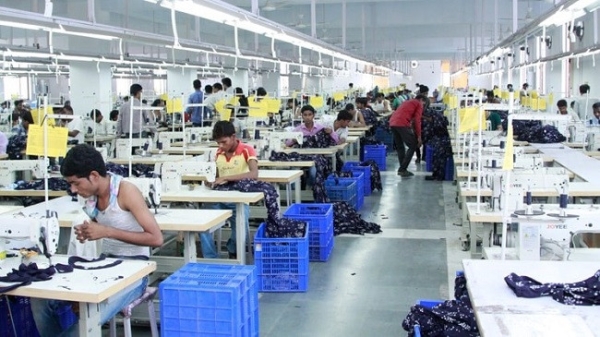#bangladeshhighcourtacquitsexpmkhaledaziaincorruptioncase हसीने के बांग्लादेश से निकलते ही खालिदा जिया के दोनों हाथों में लड्डू, पहले भ्रष्टाचार मामले में बरी, अब अमेरिका का टिकट बांग्लादेश में हालात बिल्कुल बदलते जा रहे है। शेख हसीना के बांग्लादेश छोड़ने के बाद ना केवल हिंदुओं पर अत्याचार बढ़े हैं, बल्कि कट्टर इस्लामवादी और चीन-पाकिस्तान के हमदर्दों की बल्ले-बल्ले हो गई है। बांग्लादेश में तख्तापलट के कुछ ही घंटों के बाद जेल में बंद विपक्षी नेता और पूर्व प्रधानमंत्री खालिदा जिया को रिहा कर दिया गया था। शेख हसीने के पीछे खालिदा जिया के दोनों हाथों में लड्डू नजर आ रहा है। खालिदा जिया को भ्रष्टाचार के आरोपों में बरी कर दिया गया है। बता दें कि उच्च न्यायालय ने बुधवार को पूर्व प्रधानमंत्री और बांग्लादेश नेशनलिस्ट पार्टी (बीएनपी) की अध्यक्ष खालिदा जिया को भ्रष्टाचार के एक मामले में बरी कर दिया। इसके साथ ही खालिदा जिया ने विदेश जाने की भी तैयारी शुरू कर दी है। पहले तो शेख हसीना के तख्ता पलट के ठीक बाद खालिदा जिया को निचली अदालत ने बरी कर दिया था और अब उच्च न्यायालय ने भी बुधवार (27 नवंबर 2024) को उन्हें बरी कर दिया। समाचार पोर्टल ‘बीडीन्यूज24 डॉट कॉम’ की खबर के मुताबिक, न्यायमूर्ति ए.के.एम.असदुज्जमां और न्यायमूर्ति सैयद इनायत हुसैन की पीठ ने जिया की अपील को स्वीकार करते हुए निचली अदालत द्वारा दोषी करार दिए जाने के फैसले को पलट दिया। वहीं, डेली स्टार ने अपनी खबर में कहा कि भ्रष्टाचार निरोधक आयोग ने 2011 में तेजगांव थाने में भ्रष्टाचार का मामला दर्ज किया था, जिसमें जिया और तीन अन्य पर अज्ञात स्रोतों से ट्रस्ट के वास्ते धन जुटाने के लिए सत्ता का दुरुपयोग करने का आरोप लगाया गया था। कोर्ट के फैसले के बाद खालिदा जिया खास इलाज के सिलसिले में विदेश जाने की तैयारी में हैं। उन्होंने इसके लिए सारे जरूरी इंतजाम कर लिए हैं। अपने वीजा आवेदन की प्रक्रिया को पूरा करने के लिए बुधवार को कोर्ट का फैसला आने के बाद वह अमेरिकी दूतावास पहुंचीं थीं। 'डेली स्टार' अखबार बीएनपी की मीडिया शाखा के सदस्य सयरूल कबीर खान के हवाले से अपनी रिपोर्ट में बताया है कि खालिदा अपने आवेदन की प्रक्रिया को पूरा करने के सिलसिले में अपनी उंगलियों का निशान देने बुधवार दोपहर अपने गुलशन कार्यालय से अमेरिकी दूतावास पहुंची थीं। अगले महीने जिया के ब्रिटेन जाने की संभावना है। वहां से वह उच्च स्तर के इलाज के लिए अमेरिका या जर्मनी जा सकती हैं। बता दें कि खालिदा कई गंभीर स्वास्थ्य समस्याओं से जूझ रही हैं, जिनमें लीवर सिरोसिस, हार्ट, फेफड़े, किडनी और आंख की समस्याएं शामिल है। शेख हसीन की कट्टर विरोधी माने जाने वाली 78 वर्षीय खालिदा जिया वहां की मुख्य विपक्षी पार्टी बांग्लादेश नेशनलिस्ट पार्टी की अध्यक्ष हैं। उनके पति 1977 से 1981 तक बांग्लादेश के राष्ट्रपति रहे और उन्होंने 1978 में बांग्लादेश नेशनलिस्ट पार्टी की स्थापना की। खालिदा जिया की राजनीतिक करियर की शुरुआत तब हुई जब उनके पति जियाउर रहमान की हत्या कर दी गई थी। 30 मई 1981 को तत्कालीन राष्ट्रपति जियाउर रहमान की हत्या कर दी गई थी। उनकी मृत्यु के बाद खालिदा जिया, 2 जनवरी 1982 को बांग्लादेश नेशनलिस्ट पार्टी में शामिल हो गईं।
#bangladesh_lawyer_killed_after_clashes_over_hindu_priest_s_arrest चिन्मय प्रभु की गिरफ्तारी के बाद बांग्लादेश में बवाल जारी, पुलिस के साथ झड़प में एक वकील की मौत बांग्लादेश में इस्कॉन से जुड़े चिन्मय कृष्ण दास की जमानत याचिका स्थानीय अदालत ने मंगलवार को खारिज कर दी और उन्हें 10 दिन के लिए जेल भेज दिया गया। जैसे ही अदालत ने चिन्मय कृष्ण दास की जमानत याचिका खारिज की, वहां तैनात सुरक्षाकर्मियों और चिन्मय दास के अनुयायियों के बीच झड़प शुरू हो गई। गिरफ्तारी के बाद से नाराज समर्थकों ने उनके वैन को रोकने की कोशिश की। ऐसे में उन पर ग्रेनेड दागे और लाठी चार्ज किया गया। इस झड़प के दौरान एक वकील की मौत भी हो गई। बांग्लादेश इस्कॉन के प्रमुख चिन्मय कृष्ण दास प्रभु की गिरफ्तारी को लेकर ढाका में लगातार बवाल जारी है। इस बीच, यहां के बंदरगाह शहर चटगांव में मंगलवार को झड़प हुई। इसमें सहायक सरकारी वकील सैफुल इस्लाम की कथित तौर पर हत्या कर दी गई। चटगांव बार एसोसिएशन के अध्यक्ष नाजिम उद्दीन चौधरी ने एएनआई को फोन पर बताया, चटगांव में वकील सैफुल इस्लाम अलिफ की हत्या कर दी गई है। चौधरी ने कहा कि प्रदर्शनकारियों ने एक वकील को उसके चैंबर के खींच लिया और उसकी हत्या कर दी। हालांकि, हत्या का मकसद स्पष्ट नहीं है। वहीं, चटगांव बार एसोसिएशन के महासचिव अशरफ हुसैन रज्जाक ने बताया कि आरिफ की बेरहमी से हत्या की गई है। अपने सदस्य की हत्या के विरोध में बार एसोसिएशन ने बुधवार को अदालती गतिविधियों को निलंबित करने का फैसला किया है। भारत सरकार ने चिन्मय कृष्ण दास की गिरफ्तारी पर क्या कहा? इस मामले में भारत सरकार ने मंगलवार (26 अक्टूबर) को अपनी प्रतिक्रिया दी। विदेश मंत्रालय ने एक बयान में कहा, ‘हम चिन्मय कृष्ण दास, जो ‘बांग्लादेश सम्मिलित सनातन जागरण जोत’ के प्रवक्ता हैं, की गिरफ्तारी और जमानत न दिए जाने पर गहरी चिंता व्यक्त करते हैं। बयान में कहा गया, ‘यह घटना बांग्लादेश में चरमपंथी तत्वों द्वारा हिंदुओं और अन्य अल्पसंख्यकों पर किए गए कई हमलों के बाद हुई। अल्पसंख्यकों के घरों और व्यापारिक प्रतिष्ठानों में आगजनी और लूटपाट के साथ-साथ चोरी, तोड़फोड़, देवी-देवताओं और मंदिरों को अपवित्र करने के कई मामले दर्ज किए गए हैं। विदेश मंत्रालय ने कहा कि यह दुर्भाग्यपूर्ण है कि इन घटनाओं के अपराधी अभी भी खुलेआम घूम रहे हैं, जबकि शांतिपूर्ण सभाओं के माध्यम से वैध मांगें प्रस्तुत करने वाले धार्मिक नेता के खिलाफ आरोप लगाए जा रहे हैं। हम दास की गिरफ्तारी के खिलाफ शांतिपूर्ण तरीके से विरोध प्रदर्शन कर रहे अल्पसंख्यकों पर हो रहे हमलों पर भी चिंता व्यक्त करते हैं। मंत्रालय ने कहा, “हम बांग्लादेश के अधिकारियों से हिंदुओं और सभी अल्पसंख्यकों की सुरक्षा सुनिश्चित करने का अपील करते हैं, जिसमें शांतिपूर्ण सभा और अभिव्यक्ति की स्वतंत्रता का उनका अधिकार भी शामिल है। क्या है मामला? बता दें कि 30 अक्तूबर को बांग्लादेश में राष्ट्रीय ध्वज का अपमान करने के आरोप में देशद्रोह अधिनियम के तहत चिन्मय कृष्ण दास प्रभु समेत 19 लोगों के खिलाफ मुकदमा दर्ज किया गया था। इस मामले में दो लोगों को गिरफ्तार भी किया जा चुका है। आरोप है कि 25 अक्तूबर को चटगांव के लालदीघी मैदान में सनातन जागरण मंच ने आठ सूत्री मांगों को लेकर एक रैली की थी। इस दौरान एक चौक पर स्थित आजादी स्तंभ पर कुछ लोगों ने भगवा ध्वज फहराया था। इस ध्वज पर आमी सनातनी लिखा हुआ था। इसे लेकर चिन्मय कृष्ण दास पर राष्ट्रीय झंडे की अवमानना व अपमान करने का आरोप लगाया गया है। इस मामले में चटगांव की छठी मेट्रोपोलिटन मजिस्ट्रेट कोर्ट में सुनवाई की गई थी। इस दौरान कोर्ट ने उनकी जमानत को खारिज कर चिन्मय प्रभु को जेल भेज दिया। उन्हें राजद्रोह के मामले में आरोपी बताया गया है। उनकी गिरफ्तारी के गुस्साए लोगों की तरफ से विरोध किया गया, उसी दौरान हिंसा की भड़क उठी।
#arrestwarrantissuedagainstformerbangladeshpmsheikhhasina शेख हसीना के खिलाफ गिरफ्तारी वारंट जारी, भारत के सामने आगे क्या है रास्ता? बांग्लादेश में तख्तापलट के बाद देश छोड़ कर भारत में रह रहीं पूर्व प्रधानमंत्री शेख हसीना की मुश्किलें बढ़ती दिख रही है। अंतरराष्ट्रीय अपराध न्यायाधिकरण ने हाल में छात्रों के व्यापक आंदोलन के दौरान मानवता के विरुद्ध कथित अपराध के लिए पूर्व प्रधानमंत्री शेख हसीना के खिलाफ गिरफ्तारी वारंट जारी किया है। इस मामले में हसीना के अलावा अन्य शीर्ष अवामी लीग नेताओं सहित 45 लोगों के खिलाफ बृहस्पतिवार को गिरफ्तारी वारंट जारी किया है। अंतरराष्ट्रीय अपराध प्राधिकरण को शेख हसीना ने ही बनाया था ताकि साल 1971 में पाकिस्तानी सेना के नरसंहार में मदद करने वाले लोगों के खिलाफ कार्रवाई किया जा सके। अब इसी प्राधिकरण का इस्तेमाल करके मोहम्मद यूनुस की कार्यकारी सरकार ने शेख हसीना के खिलाफ गिरफ्तारी का वारंट जारी करा दिया है।इस प्राधिकरण ने सरकार से कहा है कि वह शेख हसीना और 45 अन्य लोगों को अरेस्ट करके 18 नवंबर तक पेश करे। जिन लोगों को अरेस्ट करने का आदेश दिया गया है, उनमें शेख हसीना सरकार के कई मंत्री भी शामिल हैं। अभियोजन पक्ष ने हसीना के नेतृत्व वाली अवामी लीग सरकार के खिलाफ छात्र विरोध प्रदर्शनों के दौरान हुई हत्याओं में कथित रूप से शामिल 50 अन्य लोगों के खिलाफ भी गिरफ्तारी वारंट का अनुरोध किया है। ट्रिब्यूनल को अब तक निर्वासित नेता और उनकी अवामी लीग के सहयोगियों के खिलाफ जबरन गायब करने, हत्या और सामूहिक हत्याओं की 60 शिकायतें मिल चुकी हैं। हसीना के 15 साल के शासन में व्यापक मानवाधिकार हनन देखने को मिले, जिसमें उनके राजनीतिक विरोधियों को बड़े पैमाने पर हिरासत में लेना और उनकी हत्याएं शामिल हैं। बांग्लादेश में हिंसक आंदोलन के बाद से सत्ता छोड़कर 5 अगस्त को भारत चलीं आई थीं। वह यूरोपिय देशों में शरण लेने की कोशिश में थी। हालांकि, किसी अन्य देश में शरण नहीं मिल पाने के वजह से तब से वह भारत में रह रहीं हैं। हसीना ढाका से भागने और भारत में शरण लेने के बाद से सार्वजनिक रूप से सामने नहीं आई हैं। बांग्लादेश में कई बार शेख हसीना के प्रत्यर्पण की मांग उठ चुकी है। इस मामले में भारत के सामने कूटनीतिक संकट भी खड़ा हो गया है। माना जा रहा है कि शेख हसीना की वजह से दोनों देशों के बीच संबंधों पर भी असर पड़ सकता है। दरअसल, भारत और बांग्लादेश के मध्य एक प्रत्यर्पण संधि 2013 में हुई थी। अब सवाल उठता है कि अगर बांग्लादेश की अंतरिम सरकार शेख हसीना के प्रत्यर्पण की मांग करती है तो क्या भारत उसके अनुरोध को स्वीकार करेगा?
India achieving USD100 billion textile exports by 2030;hurdles: Kharif 2023-24 was a nightmare for 70 lakh cotton farmers, farm workers and the cotton- textile sector. How prepared is India for Kharif 2024-25 or is cotton again on farmers' death knell? Bharat Tex 2024, an extravaganza of textile industry, recently concluded with the goal to achieve USD100 billion textile exports by 2030. Nevertheless, India is below half-way in an export marathon barely touching about USD40 billion - way behind China, Vietnam, and Bangladesh. India's textile exports are just about 5% of the global exports of USD930 billion. There are two underlying features of PM MITRA to accelerate export of textile from India. First, it relies heavily on the idea of 5F Farm to Fibre to Factory to Fashion to Foreign - and second, the textile sites were selected keeping in view the proximity of cotton- production regions of central and southern cotton growing zones. By 2007-08, India became net exporter of cotton, and a top producer in the world surpassing the US and China. The cotton export peaked at 116.9 lakh bales worth INR23,153.24 crore in 2013-14 before declining YoY to 47 lakh bales worth INR8,731.32 crore in 2020-21. Exportable surplus was based on a record cotton production of 393 lakh bales in 2013-14, since then the cotton production has been gradually declining to 310-320 lakh bales as calculated on 10-year average basis. The country needs to correct its course, invest in cotton R&D, break stereotype research and scientific outreach of field level demonstration (FLDs), and develop a robust public private partnership (PPP) to advance cotton R&D and production at the national level. source: et
The government announced in June that large and medium-scale footwear manufacturers and all importers would have to abide by the quality standards for 24 footwear and related products from July 1. Customer safety and product quality in footware industry: The rules include rubber gum boots, PVC sandals, rubber hawai chappals, slippers, moulded plastic footwear, and footwear used for municipal scavenging work. Experts say with these standards, there won't be much variety in the market. For instance, customers now have fashion chappals, office chappals, beach chappals and other such varieties under one product category.The process is likely to raise the cost a little even for general-use chappals. The government has demonstrated an intention to ensure customer safety and product quality, says Kanishk Maheshwari, co-founder and board member at Primus Partners, a management consultancy. The quality requirements used to cover 3 footwear products in 2022 and now covers 24. "Quality standards ensure products fulfil specific material, craftsmanship and performance criteria. The goal is to boost domestic industry and minimise reliance on China, Vietnam, Indonesia, and Bangladesh for footwear products," adds Maheshwari. India is the second-largest producer, after China, and the ninth-largest exporter of footwear: it accounts for 13% of global production and 2.2% of exports. The Global Trade Research Initiative (GTRI), a think tank, estimates that about 5% of the Indian market's demand for footwear is met through imports; and 80% this comes from China, Vietnam, Indonesia, and Bangladesh. "China is the largest supplier, with a 38.2% share in India's imports," it says. India's global imports of footwear in FY2023 were $920.3 million. India exported $1.49 billion of footwear in FY21 and $2.05 billion in FY22. It will stop the dumping of cheap goods from China, he says, and give a boost to domestic producers. source: et
#bangladeshchinmaydasarrestedsecretaryalsomissing बांग्लादेश में इस्कॉन पर बवाल जारी, अब चिन्मय प्रभु के सचिव लापता, 17 लोगों के बैंक खाते भी फ्रीज बांग्लादेश में चिन्मय कृष्ण दास की गिरफ्तारी को लेकर शुरू हुआ विवाद नहीं थम रहा। इस्कॉन के चिन्मय प्रभु की गिरफ्तारी के बाद से कई हिंदू संगठन प्रदर्शन कर रहे हैं। इस बीच, चिन्मय प्रभु के सचिव के भी लापता होने खबर आ रही है। वहीं बांग्लादेश सरकार ने कथित तौर पर देश के बैंकों को इस्कॉन से जुड़े 17 लोगों के खातों को फ्रीज करने का आदेश दिया है। कोलकाता इस्कॉन के उपाध्यक्ष राधारमण दास ने दावा किया है कि चिन्मय प्रभु के सचिव भी शुक्रवार से लापता हैं। इसके अलावा, उन्होंने दावा किया कि चिन्मय दास के लिए प्रसाद लेकर गए दो भक्तों को मंदिर से लौटते समय अरेस्ट किया गया है। सोशल मीडिया प्लेटफार्म एक्स पर पोस्ट करते हुए उन्होंने लिखा कि एक बुरी खबर आई है। चिन्मय दास के लिए प्रसाद लेकर गए दो भक्तों को मंदिर लौटते समय गिरफ्तार कर लिया गया और चिन्मय दास के सचिव भी लापता हैं। 17 लोगों के बैंक खाते फ्रीज किए गए इधर, ढाका में स्थानीय मीडिया ने शुक्रवार को बताया कि ‘बांग्लादेश वित्तीय खुफिया इकाई’ (बीएफआईयू) ने इस्कॉन बांग्लादेश से जुड़े 17 व्यक्तियों के बैंक खातों को 30 दिनों के लिए फ्रीज करने का आदेश दिया है। इसमें जेल में बंद इसके नेता चिन्मय कृष्ण दास ब्रह्मचारी भी शामिल हैं। रिपोर्टों से पता चला है, कि देश के कई बैंकों और वित्तीय संस्थानों को खातों से एक महीने के लिए सभी लेन-देन को निलंबित करने का सरकारी निर्देश भेजा गया है। चिन्मय दास के अलावा इन लोगों पर आरोप आपको बता दें कि चिन्मय कृष्ण दास को सोमवार को ढाका मेट्रोपोलिटन पुलिस की डिटेक्टिव ब्रांच (डीबी) ने हजरत शाहजलाल अंतर्राष्ट्रीय हवाई अड्डे पर हिरासत में लिया था। हिरासत के एक दिन बाद जेल भेज दिया गया था। कृष्ण दास के अलावा, बांग्लादेश सरकार द्वारा निशाना बनाए गए अन्य 16 हिंदुओं में कार्तिक चंद्र डे, अनिक पाल, सरोज रॉय, सुशांत दास, विश्व कुमार सिंघा, चंदिदास बाला, जयदेव करमाकर, लिपि रानी करमाकर, सुधामा गौर दास, लक्ष्मण कांति दास, प्रियतोष दास, रूपन दास, रूपन कुमार धर, आशीष पुरोहित, जगदीश चंद्र अधिकारी और साजल दास शामिल हैं। कैसे शुरू हुआ मामला? चटगांव में ‘सनातन जागरण जोत’ के प्रवक्ता चिन्मय कृष्ण दास पर देशद्रोह का मामला दर्ज किया गया। उन पर आरोप है कि उन्होंने पिछले महीने भगवा झंडा फहराने के लिए बांग्लादेश के राष्ट्रीय ध्वज का अपमान किया। इसके बाद हिंदू समुदाय के विरोध प्रदर्शन के बीच दास को मंगलवार को चटगांव की अदालत में पेश किया गया, जहां से उन्हें जेल भेज दिया गया। अदालत परिसर में दास की पेशी के दौरान हिंसा भड़क गई।
#bangladeshhighcourtacquitsexpmkhaledaziaincorruptioncase हसीने के बांग्लादेश से निकलते ही खालिदा जिया के दोनों हाथों में लड्डू, पहले भ्रष्टाचार मामले में बरी, अब अमेरिका का टिकट बांग्लादेश में हालात बिल्कुल बदलते जा रहे है। शेख हसीना के बांग्लादेश छोड़ने के बाद ना केवल हिंदुओं पर अत्याचार बढ़े हैं, बल्कि कट्टर इस्लामवादी और चीन-पाकिस्तान के हमदर्दों की बल्ले-बल्ले हो गई है। बांग्लादेश में तख्तापलट के कुछ ही घंटों के बाद जेल में बंद विपक्षी नेता और पूर्व प्रधानमंत्री खालिदा जिया को रिहा कर दिया गया था। शेख हसीने के पीछे खालिदा जिया के दोनों हाथों में लड्डू नजर आ रहा है। खालिदा जिया को भ्रष्टाचार के आरोपों में बरी कर दिया गया है। बता दें कि उच्च न्यायालय ने बुधवार को पूर्व प्रधानमंत्री और बांग्लादेश नेशनलिस्ट पार्टी (बीएनपी) की अध्यक्ष खालिदा जिया को भ्रष्टाचार के एक मामले में बरी कर दिया। इसके साथ ही खालिदा जिया ने विदेश जाने की भी तैयारी शुरू कर दी है। पहले तो शेख हसीना के तख्ता पलट के ठीक बाद खालिदा जिया को निचली अदालत ने बरी कर दिया था और अब उच्च न्यायालय ने भी बुधवार (27 नवंबर 2024) को उन्हें बरी कर दिया। समाचार पोर्टल ‘बीडीन्यूज24 डॉट कॉम’ की खबर के मुताबिक, न्यायमूर्ति ए.के.एम.असदुज्जमां और न्यायमूर्ति सैयद इनायत हुसैन की पीठ ने जिया की अपील को स्वीकार करते हुए निचली अदालत द्वारा दोषी करार दिए जाने के फैसले को पलट दिया। वहीं, डेली स्टार ने अपनी खबर में कहा कि भ्रष्टाचार निरोधक आयोग ने 2011 में तेजगांव थाने में भ्रष्टाचार का मामला दर्ज किया था, जिसमें जिया और तीन अन्य पर अज्ञात स्रोतों से ट्रस्ट के वास्ते धन जुटाने के लिए सत्ता का दुरुपयोग करने का आरोप लगाया गया था। कोर्ट के फैसले के बाद खालिदा जिया खास इलाज के सिलसिले में विदेश जाने की तैयारी में हैं। उन्होंने इसके लिए सारे जरूरी इंतजाम कर लिए हैं। अपने वीजा आवेदन की प्रक्रिया को पूरा करने के लिए बुधवार को कोर्ट का फैसला आने के बाद वह अमेरिकी दूतावास पहुंचीं थीं। 'डेली स्टार' अखबार बीएनपी की मीडिया शाखा के सदस्य सयरूल कबीर खान के हवाले से अपनी रिपोर्ट में बताया है कि खालिदा अपने आवेदन की प्रक्रिया को पूरा करने के सिलसिले में अपनी उंगलियों का निशान देने बुधवार दोपहर अपने गुलशन कार्यालय से अमेरिकी दूतावास पहुंची थीं। अगले महीने जिया के ब्रिटेन जाने की संभावना है। वहां से वह उच्च स्तर के इलाज के लिए अमेरिका या जर्मनी जा सकती हैं। बता दें कि खालिदा कई गंभीर स्वास्थ्य समस्याओं से जूझ रही हैं, जिनमें लीवर सिरोसिस, हार्ट, फेफड़े, किडनी और आंख की समस्याएं शामिल है। शेख हसीन की कट्टर विरोधी माने जाने वाली 78 वर्षीय खालिदा जिया वहां की मुख्य विपक्षी पार्टी बांग्लादेश नेशनलिस्ट पार्टी की अध्यक्ष हैं। उनके पति 1977 से 1981 तक बांग्लादेश के राष्ट्रपति रहे और उन्होंने 1978 में बांग्लादेश नेशनलिस्ट पार्टी की स्थापना की। खालिदा जिया की राजनीतिक करियर की शुरुआत तब हुई जब उनके पति जियाउर रहमान की हत्या कर दी गई थी। 30 मई 1981 को तत्कालीन राष्ट्रपति जियाउर रहमान की हत्या कर दी गई थी। उनकी मृत्यु के बाद खालिदा जिया, 2 जनवरी 1982 को बांग्लादेश नेशनलिस्ट पार्टी में शामिल हो गईं।
#bangladesh_lawyer_killed_after_clashes_over_hindu_priest_s_arrest चिन्मय प्रभु की गिरफ्तारी के बाद बांग्लादेश में बवाल जारी, पुलिस के साथ झड़प में एक वकील की मौत बांग्लादेश में इस्कॉन से जुड़े चिन्मय कृष्ण दास की जमानत याचिका स्थानीय अदालत ने मंगलवार को खारिज कर दी और उन्हें 10 दिन के लिए जेल भेज दिया गया। जैसे ही अदालत ने चिन्मय कृष्ण दास की जमानत याचिका खारिज की, वहां तैनात सुरक्षाकर्मियों और चिन्मय दास के अनुयायियों के बीच झड़प शुरू हो गई। गिरफ्तारी के बाद से नाराज समर्थकों ने उनके वैन को रोकने की कोशिश की। ऐसे में उन पर ग्रेनेड दागे और लाठी चार्ज किया गया। इस झड़प के दौरान एक वकील की मौत भी हो गई। बांग्लादेश इस्कॉन के प्रमुख चिन्मय कृष्ण दास प्रभु की गिरफ्तारी को लेकर ढाका में लगातार बवाल जारी है। इस बीच, यहां के बंदरगाह शहर चटगांव में मंगलवार को झड़प हुई। इसमें सहायक सरकारी वकील सैफुल इस्लाम की कथित तौर पर हत्या कर दी गई। चटगांव बार एसोसिएशन के अध्यक्ष नाजिम उद्दीन चौधरी ने एएनआई को फोन पर बताया, चटगांव में वकील सैफुल इस्लाम अलिफ की हत्या कर दी गई है। चौधरी ने कहा कि प्रदर्शनकारियों ने एक वकील को उसके चैंबर के खींच लिया और उसकी हत्या कर दी। हालांकि, हत्या का मकसद स्पष्ट नहीं है। वहीं, चटगांव बार एसोसिएशन के महासचिव अशरफ हुसैन रज्जाक ने बताया कि आरिफ की बेरहमी से हत्या की गई है। अपने सदस्य की हत्या के विरोध में बार एसोसिएशन ने बुधवार को अदालती गतिविधियों को निलंबित करने का फैसला किया है। भारत सरकार ने चिन्मय कृष्ण दास की गिरफ्तारी पर क्या कहा? इस मामले में भारत सरकार ने मंगलवार (26 अक्टूबर) को अपनी प्रतिक्रिया दी। विदेश मंत्रालय ने एक बयान में कहा, ‘हम चिन्मय कृष्ण दास, जो ‘बांग्लादेश सम्मिलित सनातन जागरण जोत’ के प्रवक्ता हैं, की गिरफ्तारी और जमानत न दिए जाने पर गहरी चिंता व्यक्त करते हैं। बयान में कहा गया, ‘यह घटना बांग्लादेश में चरमपंथी तत्वों द्वारा हिंदुओं और अन्य अल्पसंख्यकों पर किए गए कई हमलों के बाद हुई। अल्पसंख्यकों के घरों और व्यापारिक प्रतिष्ठानों में आगजनी और लूटपाट के साथ-साथ चोरी, तोड़फोड़, देवी-देवताओं और मंदिरों को अपवित्र करने के कई मामले दर्ज किए गए हैं। विदेश मंत्रालय ने कहा कि यह दुर्भाग्यपूर्ण है कि इन घटनाओं के अपराधी अभी भी खुलेआम घूम रहे हैं, जबकि शांतिपूर्ण सभाओं के माध्यम से वैध मांगें प्रस्तुत करने वाले धार्मिक नेता के खिलाफ आरोप लगाए जा रहे हैं। हम दास की गिरफ्तारी के खिलाफ शांतिपूर्ण तरीके से विरोध प्रदर्शन कर रहे अल्पसंख्यकों पर हो रहे हमलों पर भी चिंता व्यक्त करते हैं। मंत्रालय ने कहा, “हम बांग्लादेश के अधिकारियों से हिंदुओं और सभी अल्पसंख्यकों की सुरक्षा सुनिश्चित करने का अपील करते हैं, जिसमें शांतिपूर्ण सभा और अभिव्यक्ति की स्वतंत्रता का उनका अधिकार भी शामिल है। क्या है मामला? बता दें कि 30 अक्तूबर को बांग्लादेश में राष्ट्रीय ध्वज का अपमान करने के आरोप में देशद्रोह अधिनियम के तहत चिन्मय कृष्ण दास प्रभु समेत 19 लोगों के खिलाफ मुकदमा दर्ज किया गया था। इस मामले में दो लोगों को गिरफ्तार भी किया जा चुका है। आरोप है कि 25 अक्तूबर को चटगांव के लालदीघी मैदान में सनातन जागरण मंच ने आठ सूत्री मांगों को लेकर एक रैली की थी। इस दौरान एक चौक पर स्थित आजादी स्तंभ पर कुछ लोगों ने भगवा ध्वज फहराया था। इस ध्वज पर आमी सनातनी लिखा हुआ था। इसे लेकर चिन्मय कृष्ण दास पर राष्ट्रीय झंडे की अवमानना व अपमान करने का आरोप लगाया गया है। इस मामले में चटगांव की छठी मेट्रोपोलिटन मजिस्ट्रेट कोर्ट में सुनवाई की गई थी। इस दौरान कोर्ट ने उनकी जमानत को खारिज कर चिन्मय प्रभु को जेल भेज दिया। उन्हें राजद्रोह के मामले में आरोपी बताया गया है। उनकी गिरफ्तारी के गुस्साए लोगों की तरफ से विरोध किया गया, उसी दौरान हिंसा की भड़क उठी।
#arrestwarrantissuedagainstformerbangladeshpmsheikhhasina शेख हसीना के खिलाफ गिरफ्तारी वारंट जारी, भारत के सामने आगे क्या है रास्ता? बांग्लादेश में तख्तापलट के बाद देश छोड़ कर भारत में रह रहीं पूर्व प्रधानमंत्री शेख हसीना की मुश्किलें बढ़ती दिख रही है। अंतरराष्ट्रीय अपराध न्यायाधिकरण ने हाल में छात्रों के व्यापक आंदोलन के दौरान मानवता के विरुद्ध कथित अपराध के लिए पूर्व प्रधानमंत्री शेख हसीना के खिलाफ गिरफ्तारी वारंट जारी किया है। इस मामले में हसीना के अलावा अन्य शीर्ष अवामी लीग नेताओं सहित 45 लोगों के खिलाफ बृहस्पतिवार को गिरफ्तारी वारंट जारी किया है। अंतरराष्ट्रीय अपराध प्राधिकरण को शेख हसीना ने ही बनाया था ताकि साल 1971 में पाकिस्तानी सेना के नरसंहार में मदद करने वाले लोगों के खिलाफ कार्रवाई किया जा सके। अब इसी प्राधिकरण का इस्तेमाल करके मोहम्मद यूनुस की कार्यकारी सरकार ने शेख हसीना के खिलाफ गिरफ्तारी का वारंट जारी करा दिया है।इस प्राधिकरण ने सरकार से कहा है कि वह शेख हसीना और 45 अन्य लोगों को अरेस्ट करके 18 नवंबर तक पेश करे। जिन लोगों को अरेस्ट करने का आदेश दिया गया है, उनमें शेख हसीना सरकार के कई मंत्री भी शामिल हैं। अभियोजन पक्ष ने हसीना के नेतृत्व वाली अवामी लीग सरकार के खिलाफ छात्र विरोध प्रदर्शनों के दौरान हुई हत्याओं में कथित रूप से शामिल 50 अन्य लोगों के खिलाफ भी गिरफ्तारी वारंट का अनुरोध किया है। ट्रिब्यूनल को अब तक निर्वासित नेता और उनकी अवामी लीग के सहयोगियों के खिलाफ जबरन गायब करने, हत्या और सामूहिक हत्याओं की 60 शिकायतें मिल चुकी हैं। हसीना के 15 साल के शासन में व्यापक मानवाधिकार हनन देखने को मिले, जिसमें उनके राजनीतिक विरोधियों को बड़े पैमाने पर हिरासत में लेना और उनकी हत्याएं शामिल हैं। बांग्लादेश में हिंसक आंदोलन के बाद से सत्ता छोड़कर 5 अगस्त को भारत चलीं आई थीं। वह यूरोपिय देशों में शरण लेने की कोशिश में थी। हालांकि, किसी अन्य देश में शरण नहीं मिल पाने के वजह से तब से वह भारत में रह रहीं हैं। हसीना ढाका से भागने और भारत में शरण लेने के बाद से सार्वजनिक रूप से सामने नहीं आई हैं। बांग्लादेश में कई बार शेख हसीना के प्रत्यर्पण की मांग उठ चुकी है। इस मामले में भारत के सामने कूटनीतिक संकट भी खड़ा हो गया है। माना जा रहा है कि शेख हसीना की वजह से दोनों देशों के बीच संबंधों पर भी असर पड़ सकता है। दरअसल, भारत और बांग्लादेश के मध्य एक प्रत्यर्पण संधि 2013 में हुई थी। अब सवाल उठता है कि अगर बांग्लादेश की अंतरिम सरकार शेख हसीना के प्रत्यर्पण की मांग करती है तो क्या भारत उसके अनुरोध को स्वीकार करेगा?
India achieving USD100 billion textile exports by 2030;hurdles: Kharif 2023-24 was a nightmare for 70 lakh cotton farmers, farm workers and the cotton- textile sector. How prepared is India for Kharif 2024-25 or is cotton again on farmers' death knell? Bharat Tex 2024, an extravaganza of textile industry, recently concluded with the goal to achieve USD100 billion textile exports by 2030. Nevertheless, India is below half-way in an export marathon barely touching about USD40 billion - way behind China, Vietnam, and Bangladesh. India's textile exports are just about 5% of the global exports of USD930 billion. There are two underlying features of PM MITRA to accelerate export of textile from India. First, it relies heavily on the idea of 5F Farm to Fibre to Factory to Fashion to Foreign - and second, the textile sites were selected keeping in view the proximity of cotton- production regions of central and southern cotton growing zones. By 2007-08, India became net exporter of cotton, and a top producer in the world surpassing the US and China. The cotton export peaked at 116.9 lakh bales worth INR23,153.24 crore in 2013-14 before declining YoY to 47 lakh bales worth INR8,731.32 crore in 2020-21. Exportable surplus was based on a record cotton production of 393 lakh bales in 2013-14, since then the cotton production has been gradually declining to 310-320 lakh bales as calculated on 10-year average basis. The country needs to correct its course, invest in cotton R&D, break stereotype research and scientific outreach of field level demonstration (FLDs), and develop a robust public private partnership (PPP) to advance cotton R&D and production at the national level. source: et
The government announced in June that large and medium-scale footwear manufacturers and all importers would have to abide by the quality standards for 24 footwear and related products from July 1. Customer safety and product quality in footware industry: The rules include rubber gum boots, PVC sandals, rubber hawai chappals, slippers, moulded plastic footwear, and footwear used for municipal scavenging work. Experts say with these standards, there won't be much variety in the market. For instance, customers now have fashion chappals, office chappals, beach chappals and other such varieties under one product category.The process is likely to raise the cost a little even for general-use chappals. The government has demonstrated an intention to ensure customer safety and product quality, says Kanishk Maheshwari, co-founder and board member at Primus Partners, a management consultancy. The quality requirements used to cover 3 footwear products in 2022 and now covers 24. "Quality standards ensure products fulfil specific material, craftsmanship and performance criteria. The goal is to boost domestic industry and minimise reliance on China, Vietnam, Indonesia, and Bangladesh for footwear products," adds Maheshwari. India is the second-largest producer, after China, and the ninth-largest exporter of footwear: it accounts for 13% of global production and 2.2% of exports. The Global Trade Research Initiative (GTRI), a think tank, estimates that about 5% of the Indian market's demand for footwear is met through imports; and 80% this comes from China, Vietnam, Indonesia, and Bangladesh. "China is the largest supplier, with a 38.2% share in India's imports," it says. India's global imports of footwear in FY2023 were $920.3 million. India exported $1.49 billion of footwear in FY21 and $2.05 billion in FY22. It will stop the dumping of cheap goods from China, he says, and give a boost to domestic producers. source: et








Nov 30 2024, 14:56
- Whatsapp
- Facebook
- Linkedin
- Google Plus
0